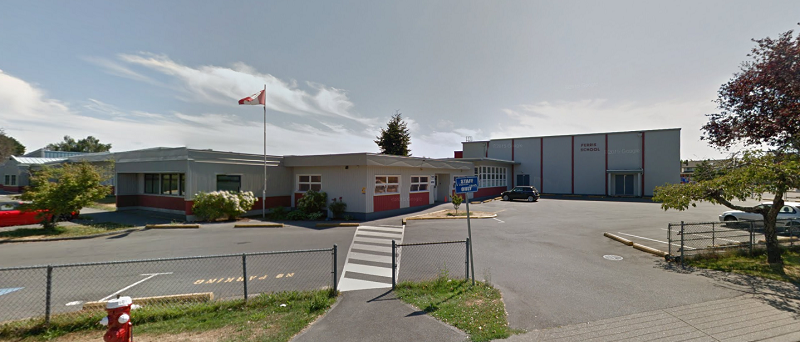Going Green
A story of two Canadian schools
Schools can meet the challenge of climate change in different ways. Here are two outstanding – but very different – examples.
This federal election saw a not-so-subtle shift, as climate change and the environment became key priorities for Canadians. Faced with increasingly unpredictable weather, fears Canada will not meet its global commitments on carbon reduction, and a strong youth movement, public awareness and concern for climate has never been more palpable.
Youth have been at the centre of this shift, driven in part by Greta Thunberg’s climate strikes which have galvanized young and old around the world.
In Canada, schools are also part of the discussion. From curriculum and programming that explore climate change and human impact on the environment, to physical changes that promote energy efficiency, waste reduction and student health, Canadian schools are meeting the challenge of a changing climate in unique ways.
École Curé-Paquin: Leading the way to zero carbon
École Curé-Paquin elementary school in Saint-Eustache, Quebec will open its doors to more than 350 students this winter. The new facility was the first project in the province to receive the Zero Carbon Building – Design certification from the Canada Green Building Council (CaGBC).
“Creative and bold initiatives are needed to counter the effects of climate change.”
The certification means that École Curé-Paquin is designed to achieve zero greenhouse gas (GHG) emissions associated with building operations. The school was part of a pilot project for the Zero Carbon Building Standard, which puts significant focus on carbon emissions in building design and performance.
For the Commission scolaire de la Seigneurie-des-Mille-Îles (CSSMI), the pursuit of the Zero Carbon Building Standard1 aligns with its belief in investing in sustainable buildings and contributing to the reduction of GHGs. The school board saw the pilot project as a flagship initiative that will potentially inspire other schools across the province. “Creative and bold initiatives are needed to counter the effects of climate change,” said Paule Fortier, President of CSSMI. “I am happy that our organization is making this environmentally responsible gesture through the construction of this school for the generations of tomorrow.”
Several decisions were made to improve energy efficiency and the school environment. For example, École Curé-Paquin uses geothermal exchange using heat generated from the earth for 100 percent of its heating and cooling needs. The school also installed photovoltaic or solar panels on the gym roof with a capacity of 27 kilowatts and sensor-controlled LED lighting, which helps reduce total energy use and daytime energy demand.
If your organization, school district or faculty of education is an EdCan member (see the list here), you can enjoy unlimited access to our online content! Click here to create your online account.
An enhanced building envelope limits hot or cool air loss, while the design optimizes natural daylight and ventilation for healthier (and more alert) students.
Research compiled by the U.S.-based Center for Green Schools has found that poor ventilation can result in more missed school days due to respiratory infections, increased incidence of sick building syndrome,2 and increased school nurse visits for respiratory problems. Further, a 2013 study found a direct link between classrooms that have more daylight and improved test scores.
The school board’s goal was to create a comfortable learning environment and to provide an exemplary building for students that could also be used as a learning tool. A screen in the school broadcasts the school’s daily energy consumption and production, including the energy produced via solar panels. In Science class, students learn how GHGs can be reduced using technologies found in the school.
W.D. Ferris Elementary embraces green curriculum

While École Curé-Paquin’s zero-carbon design is a focus for their sustainability efforts, other schools are focusing on curriculum and programming to help students understand the importance of climate change, the environment, and their role in helping to protect the natural world.
W.D. Ferris Elementary is one such school. Through the curriculum, the 500 students of this Richmond B.C. K-7 school are exposed to environmentalism, with programs designed to help them save energy, decrease waste and water use, and improve transportation and indoor air quality.
Teacher and environmental steward Kevin Lyseng credits the students for many of the program ideas that form the basis for the school’s environmental focus. “Caring about self, others and the environment is what we do,” he explained. “We also benefit from the continued support of the Richmond School District.”
“To reduce food waste, the school reversed the lunch schedule, so students can play before eating, resulting in a 95 percent reduction in food waste.”
Depending on the class, students participate in various programs, from raising Coho salmon, growing grapes or participating in regular audits of energy use and waste levels. These audits help shape activities that have had a significant impact on the school. Switching to six-bin waste collection has helped divert waste by 80 percent since 2007 by separating general waste from organics, plastics, paper, glass and metals. Their seasonal energy-saving informational programs have also helped to reduce electricity use by two percent – despite adding to the school’s plug load.
To reduce food waste, the school reversed the lunch schedule, so students can play before eating. This made the students more likely to eat their lunch, contributing to a 95 percent reduction in food waste. They’ve even piloted a flexible packaging project for the city of Richmond and are working with their hot lunch provider to address single-use plastics.
The school encourages active transportation to and from the school with walk-to-school and learn-to-bike programs. These programs help with student fitness, reduce air pollution, and limit traffic around the school – resulting in improved safety.
In the school, they minimize carpet and chalk use and use Ph-neutral cleaners which are less likely to cause eye or skin irritation. Classrooms are scent-free, with low-VOC (low-odour) paints and furnishings to keep the air quality high. Classroom air filters are replaced monthly and for classes with students that have severe allergies, HEPA filters are used because they remove common allergens like dust or pet dander.
This small school’s big success in pursuing a path of sustainability in its programming and approach to learning was recognized with the title of “Greenest School in Canada 2019” by the CaGBC. Principal Diane Steele said the school was honoured to be have been chosen for this award, but was quick to highlight the efforts of all schools committing to sustainability.

“We also want to acknowledge the hard work done by students and staff daily in schools across Canada to educate their communities about environmental stewardship,” she said. “We encourage all schools to inspire green-minded change in their communities.”
W.D. Ferris continues to spread its message to its broader community. Students and teachers have been involved in the Great Canadian Shoreline cleanup since 2007 and they regularly host district-wide ECO-Cafés, where green leaders meet to share successes and challenges. In this way, Ferris Elementary gives back to the community by encouraging others to reduce their ecological footprint.
Canada Green Building Council
The Canada Green Building Council is a not-for-profit, national organization that has been working since 2002 to advance green building and sustainable community development practices in Canada.
CaGBC and the Canada Coalition for Green Schools host the “Greenest School in Canada” competition, which recognizes schools that are weaving sustainability education into their curriculum and bringing programs and activities to students that encourage awareness about the environment.
Learn more at www.cagbc.org/greenestschool
Photos : from Mark Hutchinson
First published in Education Canada, March 2020
Notes
1 The Zero Carbon Building Standard is a Canadian-made standard and certification that assesses the carbon balance of a building – when there are no carbon emissions associated with operations, it has achieved zero carbon.
2 Sick Building Syndrome is used to describe cases in which building occupants experience adverse health effects potentially linked to the time they spend in the building.
